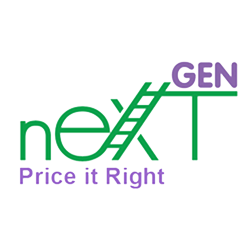The NextGen Pricing System suggests the best price for an item, specifically, the price at which an item can be expected to sell within 75 days. Initially, NextGen obtained these data from a limited number of stores around the country. But in the 2 yrs since, the data base has grown to include stores in most states and provinces in North America, most of which had been in operation for years before procuring a Nextgen Pricing System. The addition of these stores has allowed Nextgen to examine prices, controlling for area income levels and competition.
What have we learned? Far more stores under-price than over-price
In the vast majority of stores, prices fall short, often far short, of the prices at which the same items are selling in markets with like incomes and competitive situations.
Why do stores tend to under-price? The fear that higher prices will turn away buyers
Underlying this fear is the assumption that buyer decisions are based on price more than value. This is to say that buyer decisions are driven more by item-specific price ceilings, i.e., “I would never pay more than ten dollars for a pair of sneakers” than on Value, i.e., I would never pay more than $10 for a pair of Converse” sneakers.”
Is the fear justified? No
While the ‘price ceiling” mentality may be common among thrift shop customers, our analysis clearly demonstrates that it is the ”Value” mindset that reigns in better consignment and resale shops. Simply put: Customers pay more for better brands than lesser brands.
Give our customers credit. They are value conscious and knowledgeable. Even those who may not have been in times past, are now, thanks to Google and other internet shopping and price-comparison sites—accessible at the press of their smart phone buttons.
What’s to be gained by raising under-prices? Customers, Sales and Profits.
Right pricing is not what the market will bear, but what the market will embrace, as manifest in timely sales. Dollar sales will increase. Margins—bottom-line profits—will likewise increase. Item sales may not, but should not decline.
Raising the price of under-priced items allows a corresponding increase in the amounts paid for these items. To get better brands , we must pay for them. The more we pay, the more we get. Right pricing is Fair pricing meaning fair to seller/consignor as well as buyer. In the end, it’s a win-win-win. The sellers earns more, we owners earn more, and buyers have access to valued items they would not otherwise see.
The Good news? While under-prices cannot be abruptly changed for fear of alienating longstanding customers, prices can be nudged up (optimized) gradually and imperceptibly over a number of years. Clients use the NextGen Pricing system to manage these changes.

